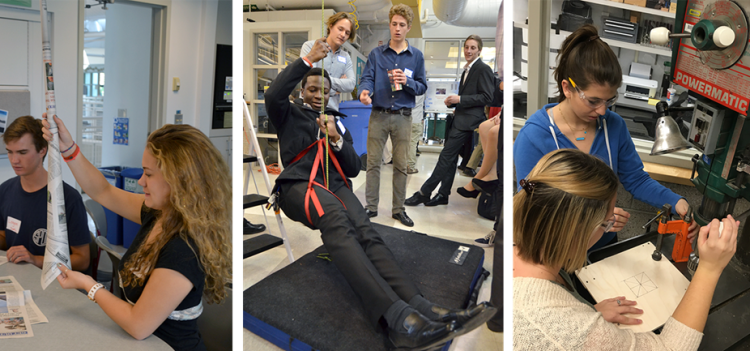Engineering Plus helps students find a 'nontraditional niche'

Undergraduate engineering programs are not known for being flexible. Research shows engineering students get about 2 percent of their degree credit hours to devote to free electives, compared to almost a quarter of credit hours for their non-engineering peers.
In 2013, the College of Engineering and Applied Science at CU Boulder launched the Engineering Plus degree to provide a more flexible curriculum for students with passions outside of engineering, whether it was teaching, business or even a foreign language. Engineering Plus students can devote up to 14 percent of their degree to free electives, and up to 37 percent to non-technical pursuits.
So far, the program is successfully providing students a way to stay in engineering without sacrificing their passions, said Marissa Forbes, a research associate in the college and lead editor of TeachEngineering digital library. She and the Engineering Plus faculty recently completed their first comprehensive analysis of the program, and the resulting paper was selected as a best paper at the American Society for Engineering Education’s national conference in June 2016.
They found that the program is becoming a destination for engineering students who find themselves stifled by a traditional engineering discipline, Forbes said. In Engineering Plus, students take core engineering courses; choose a “traditional” engineering emphasis; and then select a concentration from a list that includes things like teaching, entrepreneurship, pre-medical and geological sciences.
“Students were telling us they would have either had to not pursue their passion and stick it out in engineering, or they would have left the engineering college because there’s just not enough room in the traditional curriculum,” she said.
Conversely, the students who transfer out of the program often move to one of the college’s more traditional tracks.
“It’s becoming a place where people can find themselves,” Forbes said. “They can find their nontraditional niche or launch into a traditional discipline.”
Many students are also choosing Engineering Plus because of the focus on hands-on design, she added. Unlike traditional programs, which usually include design courses at the beginning and end of an undergraduate’s experience, design is part of the Engineering Plus curriculum in each year.
That hands-on focus is important for those looking to teach science or engineering, the group wrote in their paper. CU Teach Engineering has been a primary focus of the program since its inception, and 11 Engineering Plus students are pursuing a teaching career.
While the group is excited by the results, Forbes stressed that a more flexible curriculum isn’t a one-size-fits-all solution for all students.
“It’s important to have both options available for students who need it,” she said. “We have had discussions from the beginning about advising some students out of our program. If you want a really technical career, you should probably follow the traditional path and get a (Professional Engineering license).”
As the program grows – 92 students have enrolled so far, with 52 more expected for fall 2016 – they look forward to seeing whether the program helps promote diversity engineering, along with improving student retention in the college. They also hope to begin attracting students from other CU Boulder colleges.
“We haven’t yet been finding that students outside the college are finding us, but we’re hoping over time that we’ll draw in students from outside Engineering,” Forbes said.

